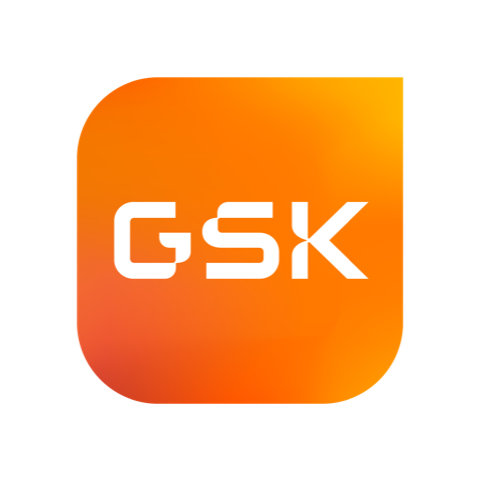Comparing CRS and ICANS Among Bispecific Antibodies

How do certain side effects compare between different brands of bispecific antibodies?
Bispecific antibodies refer to treatments that work by connecting T-cells directly to cancer cells, helping the immune system attack the cancer more effectively. These immunotherapies have fewer side effects than CAR T-cell therapy, but how do side effects compare among brands in this same drug class?
Bispecific Antibody Types and Side Effects Compared
Alexandra Elias, a 4th-year medical student at McGovern Medical School, investigated the differences between five bispecific antibodies used in multiple myeloma and B-cell lymphoma treatment (such as DLBCL and follicular lymphoma). The study was conducted in collaboration with MD Anderson Cancer Center.
B-cell lymphoma bispecific antibodies included epcoritamab (Epkinly, Genmab and AbbVie), glofitamab (Columvi, Genentech), and mosunetuzumab (Lunsumio, Genentech).
The myeloma bispecific antibodies evaluated included teclistamab (Tecvayli, Johnson & Johnson) and talquetamab (Talvey, Johnson & Johnson).
The side effects compared among the five bispecific antibodies were:
- CRS (cytokine release syndrome): This occurs when the immune system becomes overactive, releasing too many inflammatory substances (cytokines). Symptoms range from mild flu-like feelings to low blood pressure.
- ICANS (immune effector cell-associated neurotoxicity syndrome): This is a type of brain-related side effect that can cause confusion in mild cases and seizures or difficulty speaking in more severe cases.
- IEC-HS (immune effector cell-associated hemophagocytic lymphohistiocytosis-like syndrome): A rare but serious immune system disorder where the body starts attacking its own blood cells, leading to severe inflammation.
The findings of this research were presented at the 2024 ASH conference. Read a summary of the results below to learn how these side effects may differ among bispecific antibodies, helping you make informed treatment decisions with your doctor.
Comparing CRS, ICANS, and IEC-HS Between Bispecific Antibodies
The study used real-world data from the FDA Adverse Event Reporting System (FAERS) and compared the risks of these side effects across five bispecific antibodies.
- CRS was the most common side effect, occurring in nearly 90% of reported cases for bispecific antibodies.
- Teclistamab had the highest risk of CRS, followed by mosunetuzumab, talquetamab, epcoritamab, and glofitamab, which had the lowest risk.
- ICANS was most associated with teclistamab. Conversely, mosunetuzumab and talquetamab had the lowest ICANS risk, making them potentially safer options for patients prone to brain-related side effects. Combined cases of CRS and ICANS affected 5.5% of patients. The research did not specify the percentage of patients who experienced ICANS alone.
- IEC-HS was very rare, affecting 1.6% of patients receiving bispecific antibodies.
Learn About Side Effect Management Strategies for Bispecific Antibodies
If you are interested in learning about the strategies used to help reduce the risk of patients developing side effects from bispecific antibodies, click the links below to learn more.
Conclusion
While bispecific antibodies offer hope in treating myeloma and B-cell lymphomas, monitoring side effects outside clinical trials is vital for patients' well-being on optimized use of new therapies in the real world. Physicians must weigh the benefits of these therapies against their risks, ensuring patients receive the most effective and safest treatment possible.
Read More News
Click the buttons below to keep reading articles about myeloma and lymphoma.
Continue Reading Lymphoma News
Sources:
- Risk Analysis of Cytokine Release Syndrome, Immune Effector Cell- Associated Neurotoxicity Syndrome, and Immune Effector Cell- Associated Hemophagocytic Lymphohistiocytosis-like Syndrome in BiTE Therapy Vs CAR-T Therapy Using Real World Data
- Bispecific Antibodies to Treat Multiple Myeloma: An Educational Guide
- Outcomes Research: Lymphoid Malignancies Excluding Plasma Cell Disorders: Driving the CARs Home: Real-World Safety and Outcomes of CAR-T Cell Therapies
How do certain side effects compare between different brands of bispecific antibodies?
Bispecific antibodies refer to treatments that work by connecting T-cells directly to cancer cells, helping the immune system attack the cancer more effectively. These immunotherapies have fewer side effects than CAR T-cell therapy, but how do side effects compare among brands in this same drug class?
Bispecific Antibody Types and Side Effects Compared
Alexandra Elias, a 4th-year medical student at McGovern Medical School, investigated the differences between five bispecific antibodies used in multiple myeloma and B-cell lymphoma treatment (such as DLBCL and follicular lymphoma). The study was conducted in collaboration with MD Anderson Cancer Center.
B-cell lymphoma bispecific antibodies included epcoritamab (Epkinly, Genmab and AbbVie), glofitamab (Columvi, Genentech), and mosunetuzumab (Lunsumio, Genentech).
The myeloma bispecific antibodies evaluated included teclistamab (Tecvayli, Johnson & Johnson) and talquetamab (Talvey, Johnson & Johnson).
The side effects compared among the five bispecific antibodies were:
- CRS (cytokine release syndrome): This occurs when the immune system becomes overactive, releasing too many inflammatory substances (cytokines). Symptoms range from mild flu-like feelings to low blood pressure.
- ICANS (immune effector cell-associated neurotoxicity syndrome): This is a type of brain-related side effect that can cause confusion in mild cases and seizures or difficulty speaking in more severe cases.
- IEC-HS (immune effector cell-associated hemophagocytic lymphohistiocytosis-like syndrome): A rare but serious immune system disorder where the body starts attacking its own blood cells, leading to severe inflammation.
The findings of this research were presented at the 2024 ASH conference. Read a summary of the results below to learn how these side effects may differ among bispecific antibodies, helping you make informed treatment decisions with your doctor.
Comparing CRS, ICANS, and IEC-HS Between Bispecific Antibodies
The study used real-world data from the FDA Adverse Event Reporting System (FAERS) and compared the risks of these side effects across five bispecific antibodies.
- CRS was the most common side effect, occurring in nearly 90% of reported cases for bispecific antibodies.
- Teclistamab had the highest risk of CRS, followed by mosunetuzumab, talquetamab, epcoritamab, and glofitamab, which had the lowest risk.
- ICANS was most associated with teclistamab. Conversely, mosunetuzumab and talquetamab had the lowest ICANS risk, making them potentially safer options for patients prone to brain-related side effects. Combined cases of CRS and ICANS affected 5.5% of patients. The research did not specify the percentage of patients who experienced ICANS alone.
- IEC-HS was very rare, affecting 1.6% of patients receiving bispecific antibodies.
Learn About Side Effect Management Strategies for Bispecific Antibodies
If you are interested in learning about the strategies used to help reduce the risk of patients developing side effects from bispecific antibodies, click the links below to learn more.
Conclusion
While bispecific antibodies offer hope in treating myeloma and B-cell lymphomas, monitoring side effects outside clinical trials is vital for patients' well-being on optimized use of new therapies in the real world. Physicians must weigh the benefits of these therapies against their risks, ensuring patients receive the most effective and safest treatment possible.
Read More News
Click the buttons below to keep reading articles about myeloma and lymphoma.
Continue Reading Lymphoma News
Sources:
- Risk Analysis of Cytokine Release Syndrome, Immune Effector Cell- Associated Neurotoxicity Syndrome, and Immune Effector Cell- Associated Hemophagocytic Lymphohistiocytosis-like Syndrome in BiTE Therapy Vs CAR-T Therapy Using Real World Data
- Bispecific Antibodies to Treat Multiple Myeloma: An Educational Guide
- Outcomes Research: Lymphoid Malignancies Excluding Plasma Cell Disorders: Driving the CARs Home: Real-World Safety and Outcomes of CAR-T Cell Therapies

about the author
Megan Heaps
Megan joined HealthTree in 2022. She enjoys helping patients and their care partners understand the various aspects of the cancer. This understanding enables them to better advocate for themselves and improve their treatment outcomes.
More on Conferences
Trending Articles




Get the Latest Multiple Myeloma Updates, Delivered to You.
By subscribing to the HealthTree newsletter, you'll receive the latest research, treatment updates, and expert insights to help you navigate your health.
Together we care.
Together we cure.
3x Faster.









